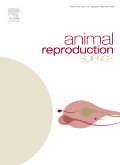
ANIMAL REPRODUCTION SCIENCE
Scope & Guideline
Pioneering Insights into Reproductive Mechanisms
Introduction
Aims and Scopes
- Reproductive Physiology and Endocrinology:
Research focusing on the hormonal regulation and physiological mechanisms underlying reproduction in various species, including cattle, sheep, pigs, and other livestock. - Assisted Reproductive Technologies (ART):
Studies on the application and optimization of ART methods such as artificial insemination, in vitro fertilization, and embryo transfer, aimed at improving reproductive efficiency. - Embryo Development and Quality:
Investigations into the factors influencing embryo quality, development, and viability, including cryopreservation techniques and environmental impacts. - Genetics and Genomics in Reproduction:
Research examining genetic factors affecting reproductive traits, including molecular markers, epigenetics, and genetic selection in livestock. - Nutrition and Metabolism in Reproductive Health:
Studies exploring the impact of nutritional strategies on reproductive performance and health, including maternal nutrition and its effects on offspring. - Microbiome and Reproductive Health:
Research into the role of microbiota in reproductive health, including studies on semen microbiota and its influence on fertility. - Animal Welfare and Reproductive Management:
Exploration of management practices that enhance animal welfare and reproductive outcomes in agricultural settings.
Trending and Emerging
- Sperm Quality and Cryopreservation Technologies:
An increased focus on optimizing cryopreservation techniques and improving sperm quality parameters, reflecting the ongoing need for effective reproductive management in livestock. - Environmental Impacts on Reproductive Performance:
Research examining how environmental stressors, such as temperature and nutrition, affect reproductive outcomes, indicating a growing concern for climate change effects on agriculture. - Epigenetics and Reproductive Health:
Emerging studies on epigenetic modifications and their impact on reproductive traits and outcomes, highlighting the importance of gene-environment interactions. - Innovations in Fertility Assessment Techniques:
Advancements in imaging and diagnostic technologies for assessing reproductive health and fertility, reflecting the integration of technology into reproductive science. - Microbiome Research in Reproduction:
Growing interest in the role of the microbiome in fertility and reproductive health, revealing new avenues for understanding and enhancing reproductive success.
Declining or Waning
- Traditional Breeding Practices:
Research on conventional breeding methods has decreased as newer reproductive technologies and genetic selection strategies gain prominence. - Basic Reproductive Anatomy Studies:
The focus on descriptive studies of reproductive anatomy has waned, with a shift towards functional and applied research emphasizing reproductive physiology and endocrinology. - Non-scientific Approaches to Reproductive Management:
There is a noticeable decline in studies that do not employ rigorous scientific methodologies, as the journal emphasizes evidence-based research. - Limited Species Scope:
Research focusing exclusively on a narrow range of species is declining, as there is a growing interest in comparative studies across multiple species for broader insights.
Similar Journals
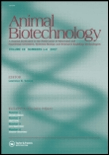
ANIMAL BIOTECHNOLOGY
Innovating Animal Science for a Sustainable FutureANIMAL BIOTECHNOLOGY is a premier journal published by Taylor & Francis Inc, dedicated to fostering innovative research in the field of animal biotechnology. With an ISSN of 1049-5398 and an E-ISSN of 1532-2378, this journal has established itself as a significant platform for scholars and professionals looking to advance their understanding of biotechnological applications in animal science. Since its inception in 1990, ANIMAL BIOTECHNOLOGY has garnered attention, currently ranking in the Q2 category for Animal Science and Zoology and Q3 in both Bioengineering and Biotechnology, reflecting its valuable contributions to these evolving fields. Researchers looking to publish their work can benefit from the journal's esteemed reputation, further emphasized by its Scopus rankings, which place it in the top tiers of relevant categories. While the journal does not currently offer open access, its essential body of knowledge serves as a crucial resource for anyone involved in animal biotechnological research, including academics, industry professionals, and students aiming to deepen their expertise and drive innovation within this exciting domain.

European Poultry Science
Unlocking the potential of poultry science for global impact.European Poultry Science is a distinguished journal published by EUGEN ULMER GMBH CO, dedicated to advancing the field of poultry research and animal science. With an ISSN of 1612-9199, this journal provides an open-access platform for researchers and professionals to disseminate their findings on topics relevant to food animals, particularly poultry. Operating from Germany, the journal has established its significance in the scientific community, evidenced by its Q3 ranking in both the Animal Science and Zoology and Food Animals categories as of 2023. The journal's Scopus rankings further reflect its competitive standing within Veterinary Food Animals and Agricultural and Biological Sciences. As we anticipate the convergence of research from 2014 to 2024, European Poultry Science remains a vital resource for fostering innovation, sharing knowledge, and supporting the development of best practices within the poultry industry, making it an invaluable asset for academics, industry professionals, and students alike.
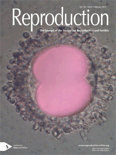
REPRODUCTION
Connecting researchers to shape the future of reproduction.REPRODUCTION, published by BIOSCIENTIFICA LTD, stands at the forefront of research in the fields of reproductive and developmental biology. With a focus on advancing our understanding of reproductive health and mechanisms, the journal has garnered an impressive reputation, consistently ranking in the first quartile for key categories including Embryology, Endocrinology, Obstetrics and Gynecology, and Reproductive Medicine in 2023. Notably, it holds an esteemed position in the Scopus rankings, with high percentiles that reflect its significant impact in the scientific community. The journal is committed to open access, promoting the broad dissemination of high-quality research to facilitate innovative discoveries and interdisciplinary collaboration. Situated in the United Kingdom, REPRODUCTION serves as a vital resource for researchers, professionals, and students eager to contribute to the evolving landscape of reproductive sciences and related fields.

Reproduction and Fertility
Elevating the discourse in reproductive sciences.Reproduction and Fertility is a premier academic journal published by BIOSCIENTIFICA LTD, dedicated to advancing knowledge in the fields of reproductive sciences, obstetrics, gynecology, and related areas. Established with a focus on delivering high-quality research, this journal has quickly ascended in prominence, achieving a commendable Q2 ranking in multiple categories, including Embryology, Obstetrics and Gynecology, Reproductive Medicine, and Urology, as of 2023. With an E-ISSN of 2633-8386, Reproduction and Fertility aims to provide a valuable platform for researchers, professionals, and students alike, offering insights into the latest discoveries and innovations in reproductive health. Although currently not an open-access journal, it remains committed to disseminating important findings that can influence clinical practices and policy-making worldwide. Operating from its headquarters in Bristol, United Kingdom, the journal serves as an essential resource for anyone invested in understanding and improving reproductive health outcomes through rigorous academic research.
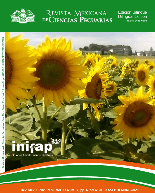
Revista Mexicana de Ciencias Pecuarias
Advancing Animal Health and Welfare Through ResearchRevista Mexicana de Ciencias Pecuarias, published by INIFAP-CENID PARASITOLOGIA VETERINARIA, is a prominent open-access journal since 2010 that caters to the fields of Animal Science and Veterinary Medicine. Based in Mexico, this journal addresses critical issues in animal health, production, and welfare, making it instrumental for researchers, professionals, and students seeking to advance their knowledge and practices. With an impact factor that reflects its growing influence, particularly in the Q3 quartile rankings in both Animal Science and Zoology as well as Veterinary (Miscellaneous) categories, the journal provides a vital platform for the dissemination of innovative research and findings. Additionally, its Scopus Ranks position highlights its role in publishing significant contributions to the fields of Veterinary Science and Agricultural Biology. The journal fosters a collaborative learning environment through its open-access model, ensuring that valuable insights are accessible to a wide audience. For those committed to enhancing animal well-being and advancing veterinary practices, the Revista Mexicana de Ciencias Pecuarias stands as a key resource through its rigorous peer-reviewed publication process and commitment to scientific excellence.

Human Reproduction Open
Empowering knowledge sharing in reproductive health.Human Reproduction Open, published by Oxford University Press, is a prestigious open-access journal dedicated to advancing the field of reproductive health and medicine since its inception in 2017. With an E-ISSN of 2399-3529, the journal provides a vital platform for researchers, clinicians, and academics to disseminate innovative findings in obstetrics, gynecology, and reproductive medicine. It is recognized for its impactful contributions, holding an impressive rank of #3 out of 209 in Medicine - Obstetrics and Gynecology, #2 out of 90 in Medicine - Reproductive Medicine, and #1 out of 21 in Medicine - Embryology, placing it in the top percentiles of its respective categories. The open-access model ensures that research is freely accessible, fostering collaboration and knowledge sharing among professionals and students alike. With a commitment to high-quality, peer-reviewed publications, Human Reproduction Open plays a crucial role in shaping the future of reproductive health research and practice, serving as an essential resource for those dedicated to improving outcomes in this dynamic field.
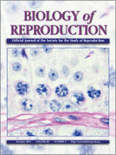
BIOLOGY OF REPRODUCTION
Pioneering Insights into Reproductive ProcessesBIOLOGY OF REPRODUCTION is a premier journal published by Oxford University Press Inc, dedicated to advancing research in the fields of reproductive biology, cell biology, and reproductive medicine. With an impressive impact factor and a strong ranking as Q1 in reproductive medicine and miscellaneous medicine, as well as Q2 in cell biology, this journal offers a vital platform for disseminating innovative findings and pivotal studies that shape our understanding of reproductive processes. Since its inception in 1969, BIOLOGY OF REPRODUCTION has become a key resource for scientists, clinicians, and students alike, providing insights that drive the future of reproductive health and research. Although not an open-access publication, it remains a respected authority, reflecting a commitment to high-quality peer-reviewed articles. The journal's comprehensive scope includes molecular and cellular aspects of reproduction, reproductive health, and associated technologies, making it indispensable for professionals looking to stay at the forefront of breakthroughs within the field.

JOURNAL OF ASSISTED REPRODUCTION AND GENETICS
Innovating the Future of Genetics and ReproductionThe Journal of Assisted Reproduction and Genetics, published by Springer/Plenum Publishers, serves as a pivotal platform for innovative research and advancements in the fields of reproductive medicine, genetics, and developmental biology. With an impact factor that positions it within the upper echelon of its categories—including Q1 rankings in Obstetrics and Gynecology and Reproductive Medicine—this journal plays a critical role in disseminating high-quality, peer-reviewed studies that significantly influence clinical practices and research directions. Renowned for its commitment to enhancing understanding in areas such as assisted reproductive technologies, genetic screening, and reproductive health, the journal attracts contributions from leading experts worldwide. With a broad scope encompassing original research, case studies, and comprehensive reviews, the Journal of Assisted Reproduction and Genetics continues to be an essential resource for researchers, healthcare professionals, and students dedicated to the advancement of reproductive sciences.
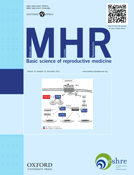
MOLECULAR HUMAN REPRODUCTION
Innovating Understanding in Human Reproductive ScienceMOLECULAR HUMAN REPRODUCTION, published by Oxford University Press, is a pivotal journal dedicated to advancing the field of reproductive biology. Since its inception in 1995, the journal has been recognized for its rigorous peer-reviewed research and substantial contributions to the understanding of molecular mechanisms underlying human reproduction. With an impressive impact factor and ranked within the top tiers (Q1 and Q2) across diverse categories including Embryology, Obstetrics and Gynecology, and Reproductive Medicine, it stands as an essential resource for researchers, healthcare professionals, and students alike. The journal aims to publish cutting-edge research that explores the complexities of human reproduction at the molecular and cellular levels, fostering a deeper understanding that can be translated into clinical practice. Although it currently operates under a subscription model, the valuable insights and groundbreaking findings featured within its pages continue to influence the trajectory of reproductive health research globally. Located in the heart of Oxford, United Kingdom, the journal remains committed to addressing vital challenges in the field and promoting innovative scientific dialogue.

REVISTA CIENTIFICA-FACULTAD DE CIENCIAS VETERINARIAS
Bridging knowledge gaps in animal health and food safety.REVISTA CIENTIFICA-FACULTAD DE CIENCIAS VETERINARIAS, published by the Universidad del Zulia, is a prominent open-access journal dedicated to advancing the fields of veterinary science, animal science, and food science. Since its inception in 1997, the journal has served as a vital platform for disseminating quality research and fostering academic dialogue among professionals and scholars in the veterinary and agricultural sectors. With its commitment to open access since 2010, the journal aims to make valuable research freely accessible to a global audience, thereby contributing to the advancement of scientific knowledge. Although currently categorized in the bottom quartile of various fields—including Animal Science and Zoology, Food Science, and Immunology—REVISTA CIENTIFICA-FACULTAD DE CIENCIAS VETERINARIAS is dedicated to nurturing innovative research that addresses pressing challenges in veterinary and related sciences. Researchers, professionals, and students will find this journal to be an important resource for quality studies that have implications for animal health, food safety, and biotechnology in the context of Venezuelan and international landscapes.